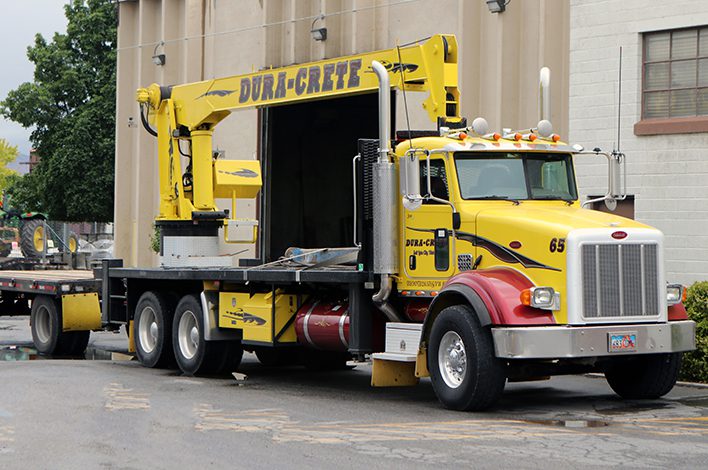Questions from the Field is a selection of questions NPCA Technical Services engineers received from calls, emails, plant evaluations and comments on blog posts or magazine articles posted to Precast.org
Bartholomew asks: Does a knuckle boom truck driver/operator need to be OSHA crane certified?
NPCA technical experts answer: In 2008, the Occupational Safety and Health Administration (OSHA) first proposed draft language requiring operators of cranes and other equipment as outlined in OSHA 1926.1400 be certified. The proposal was accepted in 2010 and went into effect on
Nov. 10, 2014. This certification requirement was based on “equipment capacity and type.”
To think that OSHA didn’t have any requirements for crane operators before 2014 would be in error. In 1979, OSHA published 29 CFR 1926.550, which included a requirement identifying “an employer’s duty to comply with manufacturer specifications and limitations” (Sec. 1926.550(a)(1)). Employers were subject to general requirements elsewhere in OSHA construction safety standards that required employers to permit only those employees “qualified by training or experience” to operate equipment. They also had to “instruct each employee in the recognition and avoidance of unsafe conditions.” However, these requirements were deemed insufficient for safety in the workplace.
Since the 2010 crane standard went into effect, there has been some pushback from certifying agencies on why type and capacity are needed for certification. After discussion with industry, OSHA updated the certification requirements based on either type OR type and capacity on Nov. 9, 2018. This update reduces the burden on the employer to maintain certification based on capacity. Instead, an employee can be certified for a type of equipment regardless of capacity.
Section 1926.1400(c) outlines equipment excluded from the scope of this requirement. The articulating/knuckle-boom truck is identified as exempt when:
- Delivering material to a construction site when used to transfer materials from the truck crane to the ground, without arranging the materials in a particular sequence for hoisting.
- Delivering material to a construction site when the crane is used to transfer building supply sheet goods or building supply packaged materials from the truck crane onto a structure, using a fork/cradle at the end of the boom, but only when the truck crane is equipped with a properly functioning automatic overload prevention device.
However, this exclusion does not apply when:
- The articulating/knuckle-boom crane is used to hold, support or stabilize the material to facilitate a construction activity, such as holding material in place while it is attached to the structure.
- The material being handled by the articulating/knuckle-boom crane is a prefabricated component. Such prefabricated components include but are not limited to: precast concrete members or panels, roof trusses (wooden, cold-formed metal, steel, or other material), prefabricated building sections such as but not limited to floor panels, wall panels, roof panels, roof structures, or similar items.
Therefore, when using an articulating/knuckle-boom crane to handle precast concrete components, the operator must be certified according to OSHA 1926 requirements.
